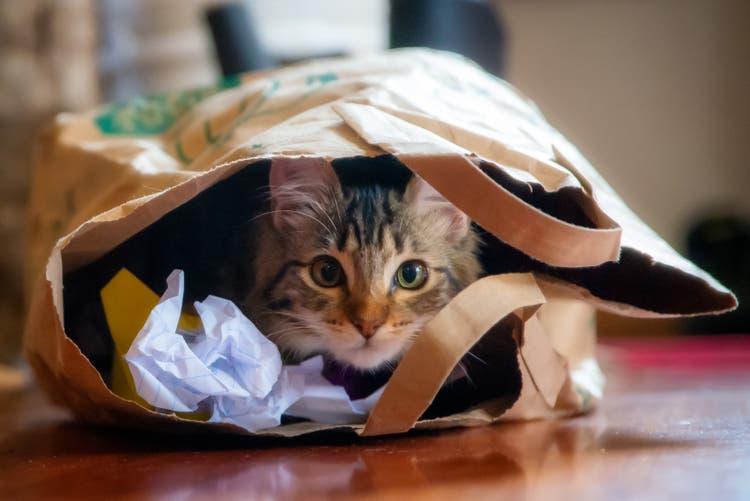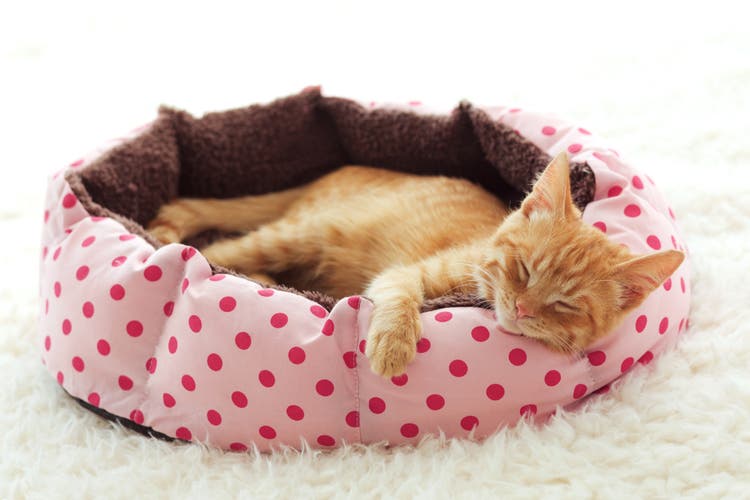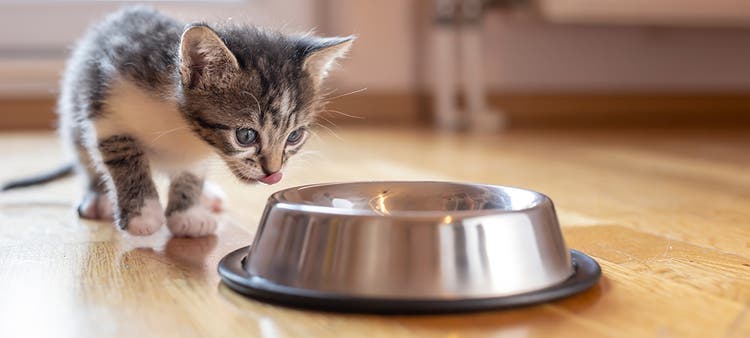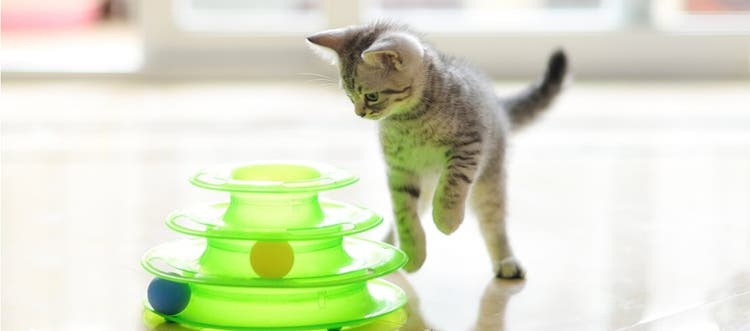Your step-by-step guide to litter box training.
While there may be some challenges that come with getting a kitten, litter box training doesn't have to be one of them. In fact, it can be relatively easy compared to housetraining a dog.
By the time kittens are about 3 weeks old, they often instinctively know how to use a litter box. Not only are they naturally drawn to sandy spaces, but they also learn from watching their mothers.
Still, you can take several steps to make litter box training even more successful. Follow these four guidelines to litter train a kitten - or even a grown cat.
4 Steps to Litter Training Your Kitten
1. Choose the Right Litter Box and Litter
You'll find plenty of choices when it comes to litter boxes and types of litter, but not all are appropriate for kittens. It's easy to unintentionally buy the wrong type. Here's what to keep in mind:
- Choose an uncovered litter box one-and-a-half times as long as your kitten. Kittens need a box that is easy to step into and has plenty of room to eliminate. As your kitten gets older, you can transition them to an adult litter box.
- Start with unscented clumping litter. Young animals are naturally curious and explore with their mouths. If they ingest fragrances or chemicals from litter, they could become sick.
- Experiment with the litter. The softer texture of fine-grained litter often appeals to cats. But your kitten has their own preference, so try a few different litters to see what they prefer.
2. Place the Litter Box in a Comfortable Location
You want privacy when you go to the bathroom - and so does your kitten. Consider the following to determine where your cat will feel most comfortable using the litter box.
- A quiet, private location is best. Don't place the box in an area with lots of action or noise, like a laundry room with a washer or dryer or a busy hallway. Opt for a corner in a bathroom or a low-traffic bedroom.
- Make sure the litter box is easy to access. Don't hide it behind furniture or place it in a room where the door is usually closed.
- If you live in a multilevel house, be sure to have one litter box available per cat per level.
- Place the box away from where your kitten sleeps or eats, as they do not like going to the bathroom in the area where they rest or eat.
- Don't move the box around frequently, as this will confuse your kitten.
3. Show Your Kitten the Litter Box and Use Positive Reinforcement
Your kitten may have already learned from their mother how to use the litter box, but you can help reinforce the behavior. Here's how:
- As soon as you bring your kitten home, take them to the litter box during a quiet time, and place them inside.
- Gently show your kitten how to use their paws to scratch at the litter. Cats naturally do this before relieving themselves, so your kitten may do it on their own.
- Continue placing your kitten in the litter box throughout the day during natural times to eliminate, such as after meals or after waking up.
- Keep an eye on your kitten while they adjust to their new home, and immediately place them in the litter box any time they begin pawing at carpets or rugs, as this behavior could indicate that your pet needs to eliminate but doesn't remember where the litter box is.
- Give your kitten privacy. Once they are in the litter box, quietly walk away so you don't disturb them.
4. Keep the Litter Box Clean
This final step is crucial to successful litter box training. Cats are very clean animals, and establishing a litter box maintenance routine can help keep your kitten comfortable, prevent unpleasant odors and possibly prevent accidents outside the litter box.
- Daily maintenance of the litter box is important so the litter isn't filled with excrement; make it a habit to scoop out feces (and urine, if using clumping litter) once a day.
- Help keep the litter box fresh by changing the litter completely every week.
- Wash the litter box at least once a week using warm soapy water. Make sure it's completely dry before replacing the litter.
What If My Kitten Has an Accident Outside the Litter Box?
Accidents are a normal part of the training process, even if you're following the above steps. If your kitten is eliminating outside the litter box, here's how to get back on track:
- Clean up the accident with an enzymatic cleaner specifically made for pet stains.
- Don't yell at or punish your kitten.
- Restart the routine and use positive reinforcement, such as treats, after your kitten uses the litter box.
- If you see your kitten paw the ground or squat outside the litter box, quickly scoop them up, place them gently in the box and give them some privacy.
If your kitten is still not using the litter box after following these guidelines, talk to your vet about potential health issues that could be causing the problem, such as a urinary tract infection.
A kitten's natural instincts and their mother's guidance often make litter training a smooth and natural process. And after following these steps, your new kitten should be using their litter box consistently in no time.
Related Articles

New Cat or Kitten: Our Downloadable Guide
Thinking about adding a feline to the family? There are so many emotional, social and physical benefits to owning a cat. Check out our free guide, also available to download!






